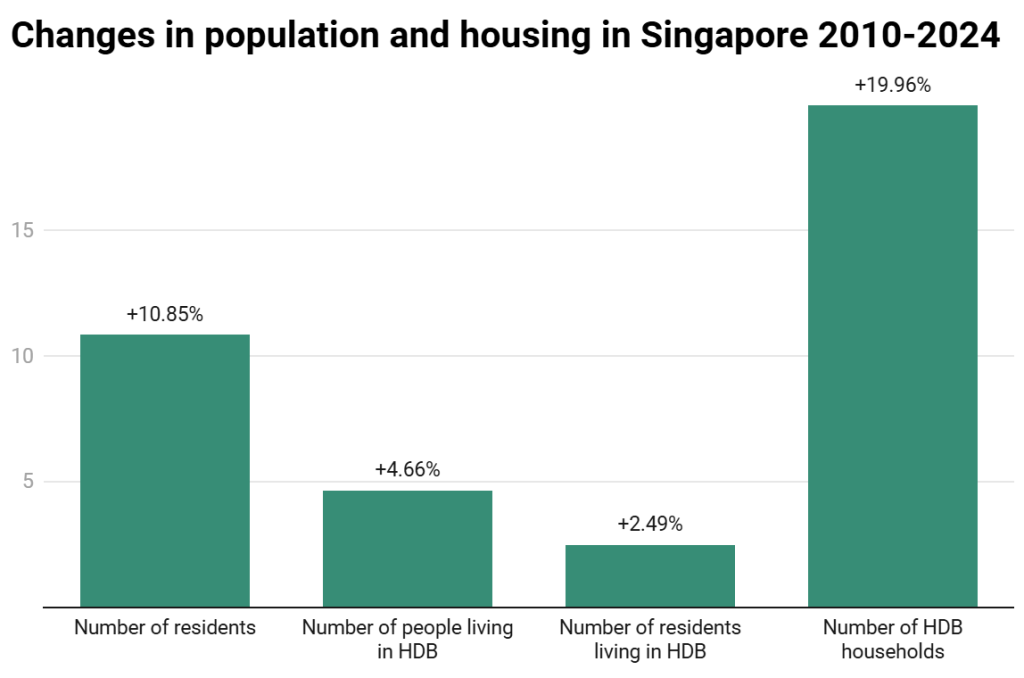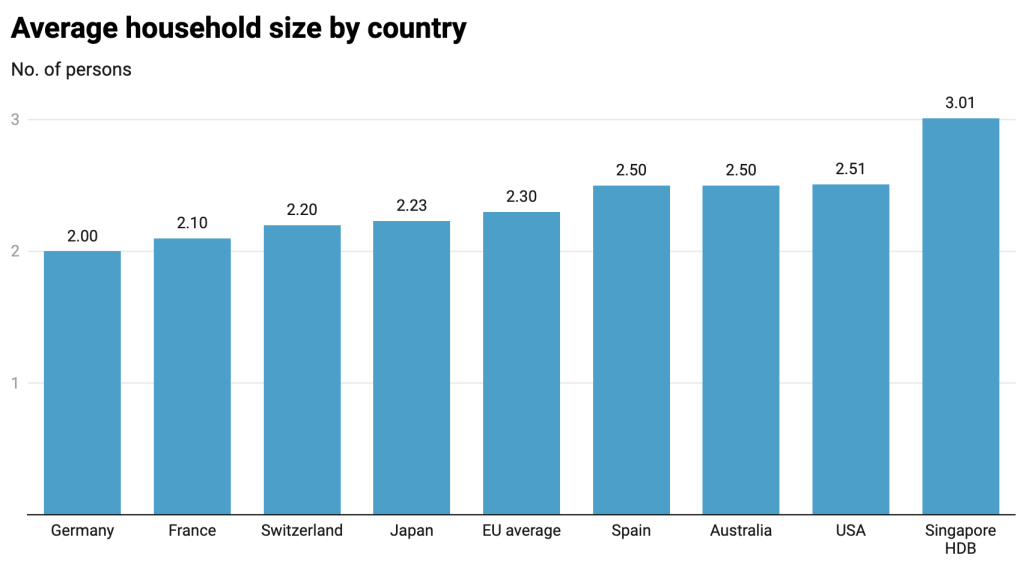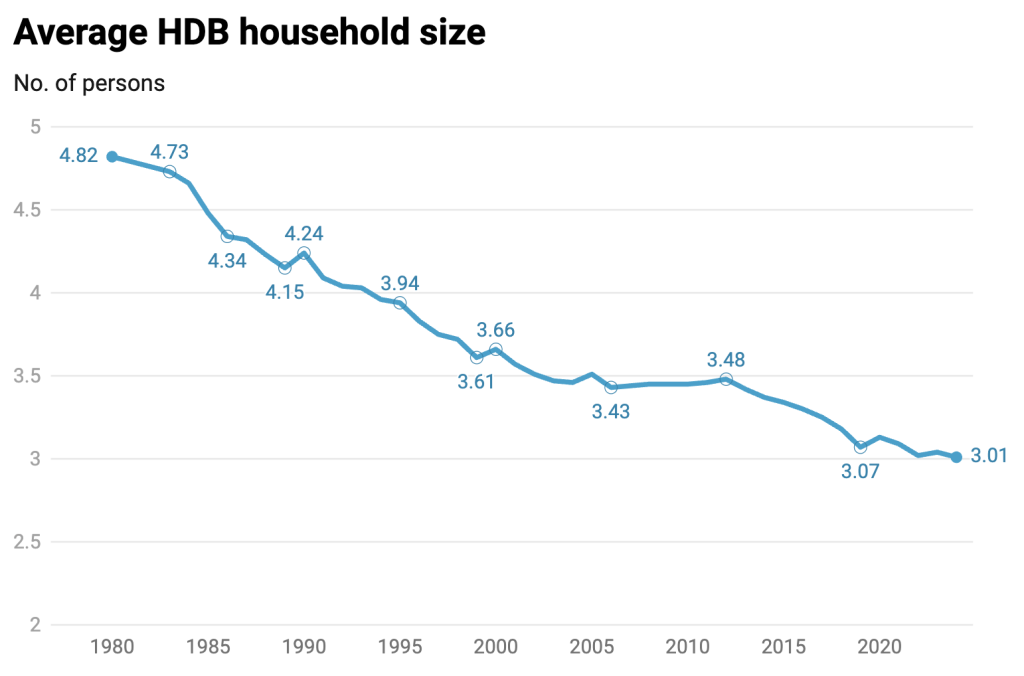Disclaimer: Unless otherwise stated, any opinions expressed below belong solely to the author.
Over the 60 years of its independent history, Singapore has been a near permanent construction site. There are always cranes towering above the city, as it needs to accommodate its 6 million people now. Forests in Tengah, Dover and, in the future, Clementi, are being transformed into residential developments, while resale HDB apartments have surged in value in recent years.
All of this seems to clash with other news reports lamenting the demise of the Singaporean society, as it is facing extinction according to Elon Musk himself:
Japan, another country dealing with a rapidly ageing society, is facing a challenge of what to do with 9 million abandoned houses that nobody wants to live in, often selling them to willing foreigners for pennies.
How is it, then, that Singapore, a nation with one of the lowest birth rates in the world, is suffering a seemingly constant shortage of housing?
Immigration?
Many point to the influx of foreigners. Since 2010,Singapore has added a million people to its total population, including 409,000 residents—that is citizens or PRs. Each year, the city-state grants its passport to around 22,000 foreigners, who then become eligible to enjoy the full benefits of HDBs.
Surely, then, their presence must be responsible for the rise in demand for apartments?
The problem with this assumption is that it finds no reflection in data. In the past 15 years, the number of residents has increased by less than 11%. Meanwhile, HDB population rose by just 4.6%—and yet, the number of HDB households jumped by 20%!

In other words, the demand for public housing has surged more than 4 times faster than the number of people who actually seek to live in HDB.
What’s more, the population of actual Singapore residents living in HDB has increased by even less, at 2.49%. The remainder are non-citizens either renting or living with their resident spouses.
Immigration, then, has had a very limited contribution to the demand. No more than a quarter of the total.
Shrinking families
The real reason behind the surge in interest in public flats is the changing attitude towards family life—both having children and living with one’s parents.
Population figures alone cannot tell us how many units of housing may be needed until we know how many people are expected to fit in them.
In 1980, the average size of an HDB household was 4.82 persons—today it’s just 3.01.
Housing the current HDB population of 3.4 million people would have required just 705,000 apartments back then, instead of the current 1.132 million—that’s a net difference of 427,000 homes. For reference, Tampines, the largest HDB town in Singapore, has 82,000 units.
In fact, as recently as 2010, that average was 3.45. If Singapore’s population hasn’t increased even by a single person in the past 15 years, the country would still have to build about 138,000 apartments to account just for the changing HDB household composition.
This explains about 3/4 of the 188,000 apartments built in that time.
On the one hand, Singaporeans have fewer children (whose presence raises the statistical average family size) and, on the other, multigenerational homes are a thing of the past. Even young adults prefer to live on their own, as soon as they have the opportunity, just like seniors, trying to avoid being a burden for as long as they can.
And all of them need a place to stay.
570,000 new flats
While Singapore may seem to be ageing rapidly, its shrinking families are still some distance away from other countries, where the average household size is well below the 3.01 people in an HDB apartment.

While the land and regulatory constraints (like the limited access to public flats by singles) dampen the demand compared to countries with fewer such limitations, there’s no reason to think that the downward trend (from 3.45 to 3.01 in 15 years) is going to suddenly stop.

Even if the current HDB population of 3.4 million could be frozen, the drop from 3.01 to 2.5 would require constructing 230,000 new apartments. And if it ever approached the 2.0 recorded in Germany and several other EU countries, it would skyrocket to ca. 570,000—that’s very nearly half of all HDB homes currently in existence!
Remember, this is without a single new immigrant, resident or citizen—just keeping the population size as it is now, only distributed in the way it is in other modern societies.
Of course, it’s not going to happen overnight. But another 0.5 point drop could reasonably happen within 15 to 20 years. It means that Singapore will still have to find enough space to fit as many apartments as there currently are in Tampines, Jurong Weng and Sengkang combined.
That’s why it shouldn’t be a surprise that forests are cleared and golf courses razed, to make space for all of them. It’s what Singaporeans express their need for.
- Read other articles we’ve written on Singapore’s current affairs here.
Featured Image Credit: Wirestock/ depositphotos
